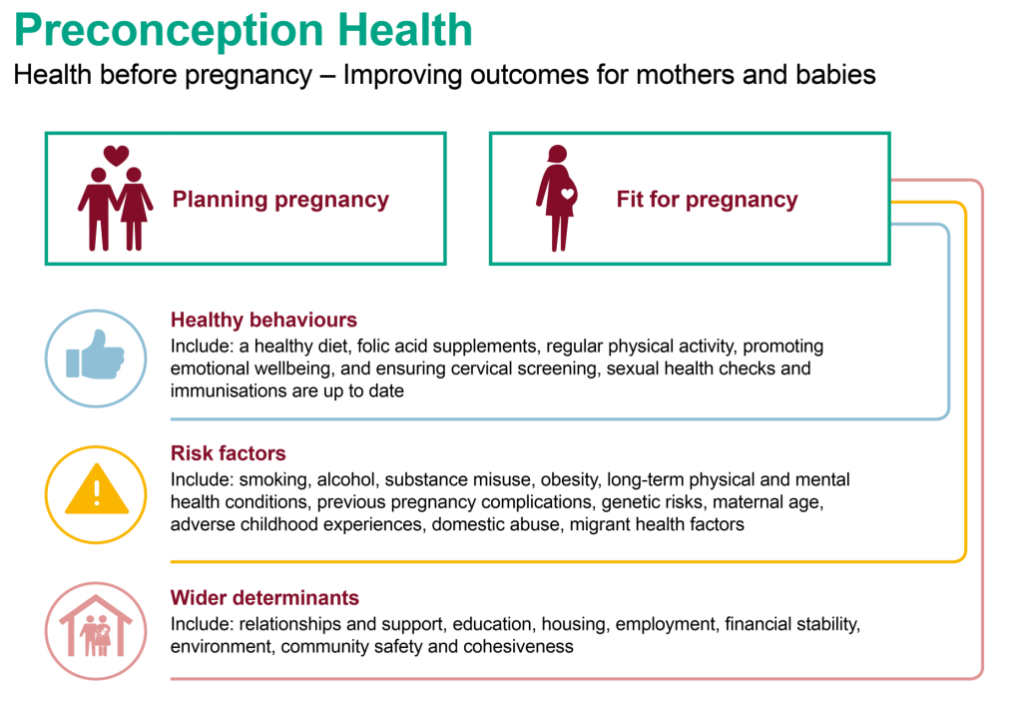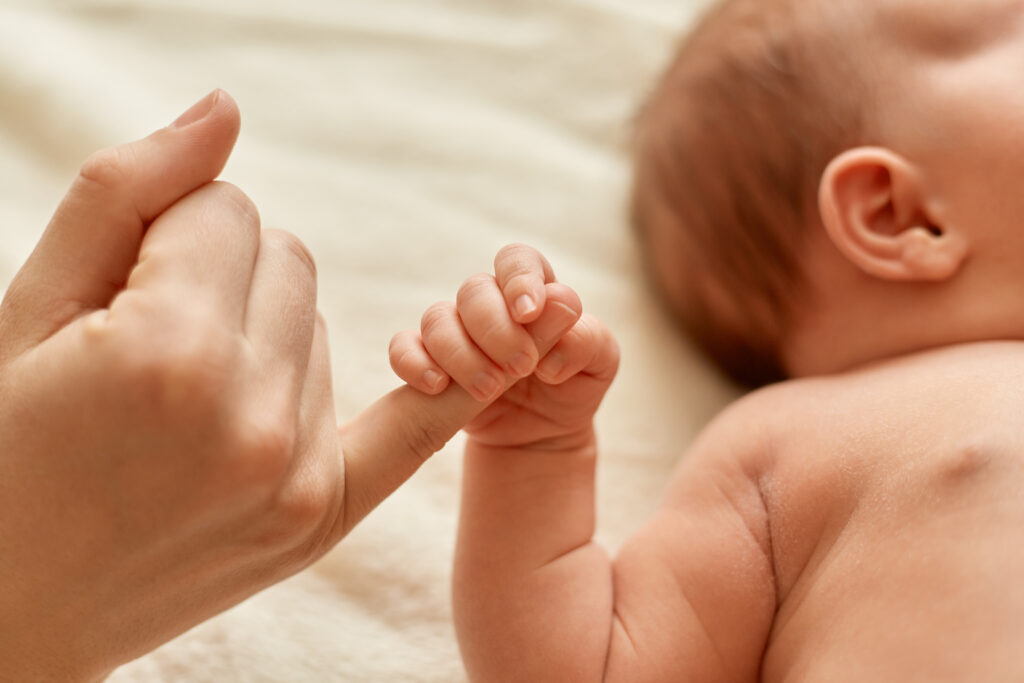Introduction to ‘Development in Utero’
In this sprint you will develop the following knowledge:
- I know and understand how a healthy pregnancy sets up the unborn baby for a healthy life.
- I understand that as the foetus grows inside the womb, it is susceptible to the environment around the birth parent/ mother (hears what the birth parent/ mother hears, consumes what the birth parent/ mother consumes and can be adversely impacted by high levels of distress in the mother/birth parent).
- I can explain the development stages of an unborn baby relative to their gestation.
In the pre-conception stage there are many things to consider that can affect a pregnancy. The diagram below represents healthy behaviours, risk factors and wider determinants.


Read: Making the Case for Preconception Care
Public Health England
- Using the link above, read through the following pages:
- Read page 10 and make notes about the impact of poor preconception health.
- Read page 16 and 17 and make notes about the healthy behaviours, risk factors and wider determinants.
Develop your understanding of ‘Development in Utero’
We’re now going to look in more detail about the development in the Utero stage of pregnancy.

Watch: Stages of pregnancy – how your baby develops
Bupa Health England
A healthy pregnancy contributes to a healthy life for the unborn baby. Watch this video to help you understand the development stages of an unborn baby in relation to their gestation.
Reflect upon ‘Development in Utero’
So far you have thought about the importance of good pre-conception care, the risk factors and wider determinants and you have learnt about how the unborn baby develops in the womb. In this section you will explore how the foetus can be affected.

Read: The mental health crisis of expectant women in the UK: effects of the COVID-19 pandemic on prenatal mental health, antenatal attachment and social support
Filippetti, M.L., Clarke, A.D.F. & Rigato, S. The mental health crisis of expectant women in the UK: effects of the COVID-19 pandemic on prenatal mental health, antenatal attachment and social support. BMC Pregnancy Childbirth 22, 68 (2022).
Using the link above, read the background section to this piece of research.
Academic journals can be difficult to engage with. Just try to read one sentence and think about what does this mean? Take each sentence below and write in your own words your understanding of this.
Note how the journal suggests;
- “pregnancy has been extensively shown to be times in a woman’s life especially prone to mental health issues”
- “Among psychiatry disorders, the prevalence of depression and anxiety is especially high during pregnancy”
- “a substantial percentage of mothers report subclinical perinatal depressive symptoms that go undetected.”
Subclinical means that there are no outward symptoms so it is not clinically detectable.
Perinatal is the period of time from when a person becomes pregnant until a year after birth.
Therefore, this means a large number of mothers have symptoms of depression during pregnancy and after birth that are not recognised.
So what impact does this have on the foetus/baby?
- “Maternal mental health difficulties, such as depressive or anxiety symptoms, can also have an immediate impact, by interfering and impairing the formation of a positive relationship with the fetus”
- “Maternal antenatal attachment is a multi-dimensional construct that includes maternal thoughts, behaviors, emotions and attitudes towards the unborn child”
This means that how the parent is feeling impacts on the relationship with the foetus and baby. The attachment is affected by many things including the mothers emotions and her attitude. The attachment is affected by her thoughts which also influence her behaviours.

- “Previous studies have found that women with higher levels of depression have lower levels of maternal antenatal attachment, suggesting that maternal mood negatively impacts on the development of an early relationship between a mother and her child.”
- “There exists also evidence that factors from contextual domains, i.e. social support, are related to maternal antenatal attachment”
- “Recent evidence shows that higher social support is associated with lower mental health symptoms, thus suggesting that support may act as a protective factor.”
Well done on engaging with a journal article.






